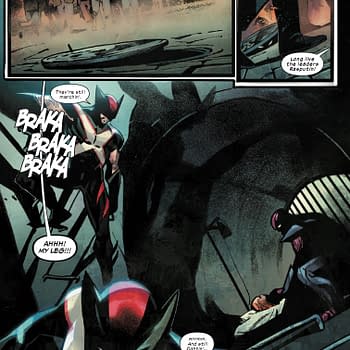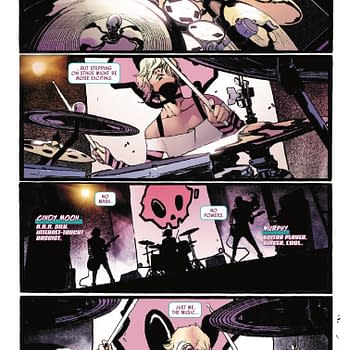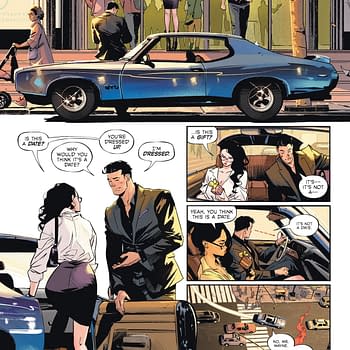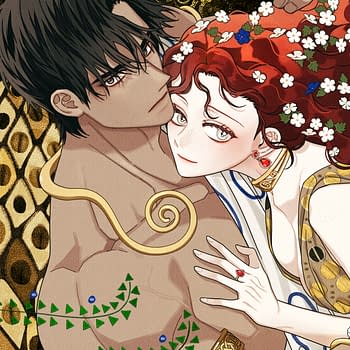Posted in: Comics | Tagged: Comikaze 2013, cosplay, steampunk
Goggles, Pocket Watches, Gears And Corsets – Steampunk Dominates At Comikaze
Michele Brittany writes for Bleeding Cool from Comikaze:
Right up front, I am fascinated by Steampunk. This year, there was a major presence at Comikaze, with a number of panels devoted to this subculture group as well as an area on the show floor referred to as Steampunk Alley. I was able to catch one of the panels Saturday afternoon titled Steampunk in Popular Culture, which provided some clarity to the team and reveal just how influential this group has become the various media outlets.
The panel was comprised of League of S.T.E.A.M. (Supernatural & Troublesome Ectoplasmic Apparition Management) members, Sheyne Fleischer and Andrew Fogel; cosplayer, Bethany Seagrave; Black Hand Mercantile costumer, Johnny Bias; and moderator Dina Kampmeyer (a.k.a. Lady Steam).

One of the trends I noticed was the increased presence of steampunk via number of vendors and cosplayers at Comikaze. Seagrave shed light on that very observation. She explained that steampunk was conducive to "upcycling" – a very popular movement now – old or inexpensive items to become ingenious steampunk inspired objet d'arts. She also said that steampunk was influencing some of the big names in fashion, such as Alexander McQueen, Gucci, and Prada, which was unusual since it was usually fashion that dictated fashion trends, not the other way round.

And it hasn't just been fashion that has been influenced by steampunk. Weaponry is another. As a fan of zombies, Fogel wanted to utilize Ash from Army of Darkness. Fogel's character needed a chainsaw that would function in the Victorian era. He came up with a hand-cranked chainsaw.

Once back on the floor, I noticed several steampunk projects. Madeleine Holly-Rosing, writer of the steampunk themed comic book series, Boston Metaphysical Society, stated that she "wanted to show the American experience which could include women and people of color." Started originally as a period piece, it morphed into a "steampunk ghostbusters" story that melded her interest in history and technology. She appreciated that "steampunk is very inclusive and can be integrated to any culture." It was a theme that resonated from the panel as well as it being flexible and malleable to what a person wanted it to be, within the guidelines of being functional to the particular "punk" period referencing.

The panel and speaking with Holly-Rosing and Rowan Martinez were really only the tip of the preverbal iceberg that is the complex nature of steampunk, but it did provide me a start and resources. And who knows, maybe at next year's Comikaze, I'll be a steampunk secret agent..
For more information about steampunk and the projects mentioned in this article, visit The League of S.T.E.A.M. (www.leagueofsteam.com), Madeleine Holly-Rosing (http://bostonmetaphysicalsociety.com), and Paul Rowan Martinez (www.the19XX.com).
Michele Brittany is an independent pop culture scholar and semi-professional photographer currently editing an upcoming anthology on the influence of James Bond on popular culture. She regularly posts reviews and analysis on the spy/espionage genre on her blog, Spyfi & Superspies.






















